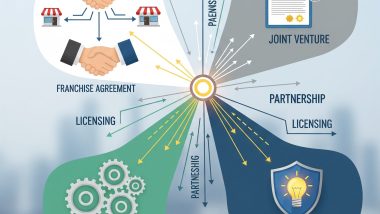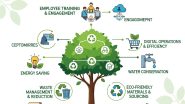Move your Offline Business to an Online Business
Setting up an online business has become the new trend these days. The usage of smartphones is rising and so is the demand for an online market for everything. It’s time to get out of the traditional forms of running a business by adopting the path of Online Business Transformation. Ecommerce companies can reduce their physical infrastructure costs at the same time be available to customers at the click of a button from anywhere in the country.
Want to take your business online? Here are some key steps for easy Business Transformation.
Open a Seller Account –
Amazon is the world’s largest e-commerce company with an expertise in this for over 2 decades. One needs to register as a seller first on Amazon. Other online platforms are also available such as Flipkart (now owned by Walmart), Snapdeal, Myntra, etc. Opening a seller account is free of cost and the process is very simple. The seller just needs to add company details like:
- Name of the company
- GSTIN
- Bank Account Details (to receive payments) etc.
Creating a seller account is the first Business Transformation step that an entrepreneur needs to take
Product Listing –
The second Business Transformation step is to create a product listing. The seller needs to list the entire product range he wishes to sell online. A proper Product title, Bullet points, description, images, videos are required to create a good product listing. It is important that the seller should add as much information about the product with its price to make it easy for the customers to grasp and then make their buying decision quickly.
Order Fulfillment Method –
For easy Business Transformation, major e-commerce companies allow sellers to choose from different fulfillment methods i.e.,
- Self-Ship – Here seller needs to pack all the orders themselves and take responsibility for the timely delivery of orders received within the given time period.
- Drop Ship – The Seller is required to pack the products. Ecommerce Company gets the ordered product picked by their logistic partners. The seller is not responsible for any delay in delivery.
- Fulfilled– Amazon and Flipkart have their own fulfillment channel called FBA and FK Assured respectively. Sellers are required to transport their stock to the warehouses of e-commerce companies in bulk. All the packaging and order delivery is then handled by the company itself.
Regular Payment –
There are no issues of payments when one decides to go for digital Business Transformation. Normally, the first few payments of the orders dispatched is credited to the seller’s bank account within 15 days. Post that, the seller receives payment every 7 days. The seller should keep track of all the transactions. Any delay in payments should be notified to the Ecommerce Company.
Amazon and Flipkart is very seller centric, they get these issues resolved in 24-48 hours.
Account Health –
Last but not least, the seller account health is very crucial for future business and this is a key Business Transformation step. Account Health or Seller account reputation is a reflection of customers' good or bad experiences. When orders get delivered to the buyer, the Ecommerce player asks for customer feedback which is added to the seller account health. Satisfied customers can give a 5-star rating on the products; on the other hand, unsatisfied buyers will give lesser star ratings. This way the seller will be alert at all times and will supply perfect products to reserve the goodwill. Frequent negative ratings from buyers can result in the suspension of your seller account as well.
Easier said than done, right now these digital Business Transformation steps may seem easy, but providing a good quality product and strong backend operations to keep you ahead from the competition is a tough task. Today E-commerce deals in almost every product providing discounts and benefits to their customers. The customers take more interest to shop online than stepping out as they can buy whatever they want and that too at prices lower than the market. Going digital is cost-efficient and effortless for both sellers and consumers at the same time.



















